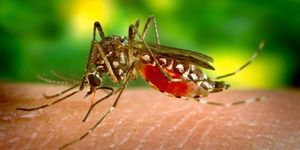Molecular Dysfunction Underlying OCD Discovered
One of the manifestations of obsessive-compulsive disorder (OCD) is an extreme fear of dirt or bacteria. Patients that suffer with the mental disorder may develop habits that involve washing compulsively or cleaning their hands or body over and over. They get locked into a vicious circle; the fear of contamination only rushes quickly back after washing. It's not hard to see why many people with the disorder don't see a way out of their situation, and continue with their habits even to the detriment of their health, such as when skin becomes raw from excessive washing. It's tough to treat OCD (the disorder is discussed in the video below), especially because so little is known about the underlying mechanisms; as such there aren't good targets for drugs. New work published in Molecular Psychiatry may change that however, as researchers have linked a gene to the disease.
The leader of the work, Professor Kai Schuh of the Institute of Physiology at the Julius-Maximilians-Universität (JMU) Würzburg (Germany) works in collaboration with the JMU's Departments of Psychiatry and Neurology to research the causes of OCD. "We were able to show in mouse models that the absence of the protein SPRED2 alone can trigger an excessive grooming behavior," Schuh said.
Roughly two percent of the population is afflicted with some type of OCD at least once in their lifetime. Persistent, troubling thoughts cause sufferers to behave in ritualized, repetitive ways in an attempt to compensate. It's treated in a slightly random way with antidepressants; that therapy is not specifically for the condition, it's simply the best potential therapeutic. Especially since there hasn't been any indication of what triggers this illness until now, Schuh suggested that this new work is a critical finding. Other work has suggested a multitude of factors that work together to result in disease.
The investigators found a protein, SPRED2, at especially high levels in specific parts of the brain, the basal ganglia and the amygdala. Normally, SPRED2 functions to inhibit an important cellular signaling cascade, specifically the Ras/ERK-MAP kinase pathway (outlined in the following video). When SPRED2 is absent, activity in the pathway increases.
"It is primarily the brain-specific initiator of the signal pathway, the receptor tyrosine kinase TrkB, that is excessively active and causes the overshooting reaction of the downstream components," explained biologist Dr. Melanie Ullrich.
The researchers also tested a molecule to inhibit the overactive signaling pathway in their animal model, and they observed an improvement in the OCD symptoms. The scientists tested an antidepressant therapy for the OCD, which also relieved symptoms as seen in human therapies.
"Our study delivers a valuable new model that allows the disease mechanisms to be investigated and new therapy options for obsessive-compulsive disorders to be tested," Professor Schuh said.
This newly found connection between OCD and the Ras/ERK-MAP kinase pathway also opens up new avenues for therapeutics. There are drugs already approved for use in humans that act upon that pathway. Ullrich explained that they are cancer drugs (because an overactivation of the Ras/ERK-MAP kinase pathway is known to be a trigger of cancer). "So we are wondering whether such drugs could also be effective in the treatment of obsessive-compulsive disorders and whether they are beneficial in terms of side effects," Ullrich said.
Sources: AAAS/Eurekalert! via University of Würzburg, Molecular Psychiatry








